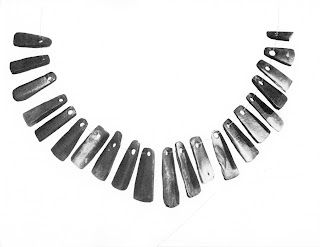
Kamehameha I prevailed and at the climax of the battle, caught between the Hawaiian Army and a 1000-foot drop, “over 400 Oahu warriors either jumped or were pushed over the edge of the Pali” (http://en.wikipedia.org/wiki/Battle_of_Nu'uanu) - the leaping mullet. This had been the last major challenge to Kamehaha I and afterword the combined islands were known as the Kingdom of Hawaii.
The Nu’uanu petroglyphs consist of three sites along the Nu’uanu stream behind the Nu’uanu Memorial Park Cemetery and the Royal Mausoleum, near Alapena pool. They have a total of as many as forty carved images mostly human figures and dogs. The number of dog images is somewhat surprising as there are no wild canids on the Hawaiian Islands to commemorate, so they have to be representations of the domestic dog (Canis lupus familiaris).
There is another interesting myth involving a dog. In this myth Kane, the chief god of the Hawaiian pantheon used to party with his companions at night in the mountains over Wai-pi’o valley and each drink of awa (the intoxicating drink known as kava in the Pacific islands ) was accompanied by a blast on their conch shell horns (pu). Kane’s horn, the famed kiha-pu, was of divine origin and possessed supernatural power, as well as being louder than any other. These loud sessions disrupted the whole countryside and kept the inhabitants awake all night. To deal with these disruptions King Liloa sent a dog named Puapualenalena to steal Kiha-pu, which subsequently became a prized possession of Hawaiian monarchs. (http://www.sacred-texts.com/pac/ulh/ulh22.htm) This Kiha-pu can be seen on display at the Bishop Museum in Honolulu.
Whichever story we choose to believe this concentration of dog petroglyphs seems totally unique and is off the beaten path so it may not be visited as regularly as more publicized sites.
References:
Traditions of O’ahu: Dog Gods of the Ko'olau Mountains, Asia-Pacific Digital Library, Kapi’olani Community College, (http://apdl.kcc.hawaii.edu/~oahu/stories/kona/doggods.htm).
Wikipedia












































